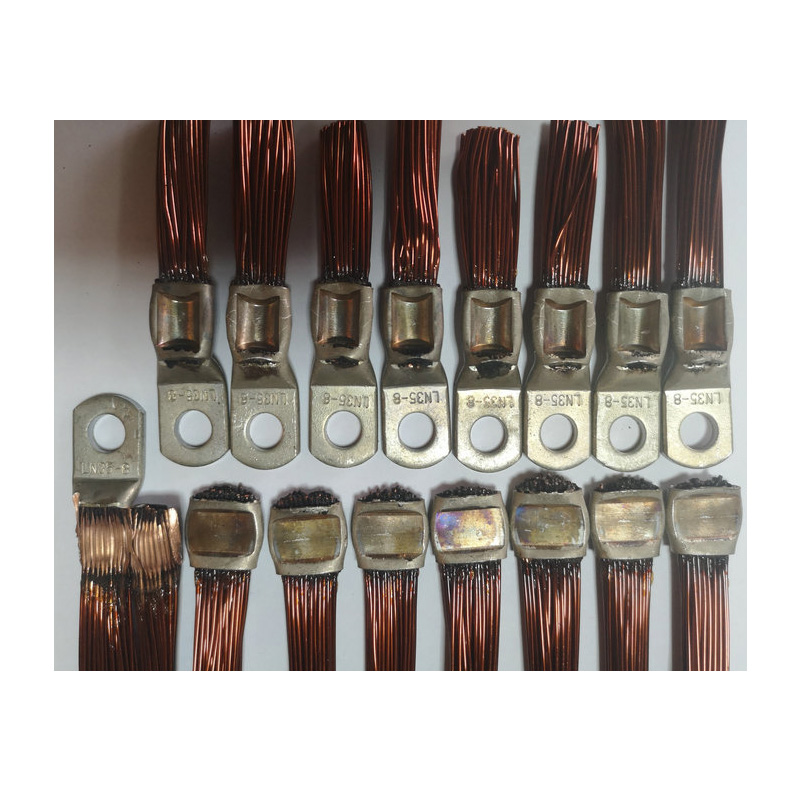
Differences between industrial frequency AC precision welding power supply and inverter DC precision welding power supply
2024-10-10 14:41In the field of precision hot-press welding, how should we choose a suitable welding power supply? Let's take AC power supply and inverter power supply as examples to make a comparative analysis and see how to choose.

1. Comparison of structure and appearance
The structure of AC precision welding power supply is simple, and the main structure is only AC transformer + PLC control board. The weight is almost 1 times heavier than the inverter DC of the same power, because the transformer has much greater loss in low frequency when passing low frequency and medium frequency, so the transformer must be made very large and bulky. The structure of inverter DC precision welding power supply is complex, with frequency conversion circuit, rectifier circuit, step-down transformer, single-chip microcomputer control, I/O and other input and output functions, light structure, friendly human-machine interface, and higher grade!
2. Principle comparison
The principle of AC precision welding power supply is AC input-step-down-AC output; the inverter DC precision welding power supply is AC input-rectification filter to DC-through IGBT module to become medium frequency AC-step-down-full-wave rectification-low-voltage medium frequency DC.
3. Principle Analysis
The 50HZ AC power is directly stepped down by the transformer, and the current is amplified and output without changing the frequency. The strong power part basically does not need other auxiliary circuits. The inverter DC precision welding power supply generally has 3-phase AC input, and obtains 530V high-voltage DC after rectification and filtering. After passing through the IGBT frequency conversion module, it obtains AC with a medium frequency of 2000HZ, and then passes through the step-down transformer again to obtain low-voltage medium-frequency AC. At the output end of the transformer, full-wave rectification is performed to obtain low-voltage medium-frequency DC.
4. Advantages and Disadvantages of AC and Inversion
AC power supply is low in cost, power supply equipment is simple to assemble, and the control accuracy is low. The control accuracy is 20ms (the AC power supply is 50hz). The AC is a sine waveform, the energy is not concentrated, the heating time is slow, and the energy consumption is high. The inverter precision welding power supply has high cost, complex structure, troublesome assembly and debugging, high control accuracy, and inverter control accuracy is 0.5ms (under 2000HZ). The control accuracy is 40 times faster than AC, the transformer loss is small, and the energy consumption is low.
5. Control comparison
Currently, the AC hot-press welding system uses PLC or 8-bit single-chip microcomputer, which has slow response speed and may be too late for protection. The program and algorithm are simple, and the common control method is differential compensation. The inverter precision welding power supply adopts 32-bit ARM chip + CPLD logic processor combination control, with high precision and fast speed. Rich I/O interface and protection judgment function can cope with a variety of use occasions and a variety of external abnormalities for effective protection. Generally, self-regulating PID control is adopted, with complex program and high stability.
6. Process comparison
The heating time of AC precision welding power supply is too slow, the temperature rise speed is too slow, the fluctuation is large, the control accuracy is not high, the energy loss is too much, the protection speed is slow, and there is a risk of burning welding head for extremely short abnormalities. The inverter precision welding power supply has adjustable and controllable current, fast heating speed, fast temperature rise speed, stable, high control accuracy, concentrated energy, and fast protection speed.
Stability comparison
AC input to AC output is directly affected by the grid voltage, with poor stability. The inverter has a built-in current sensor and adopts PID algorithm. The stability and reliability are much higher than AC.
In the field of precision welding, inverter DC welding power supplies can eliminate a considerable portion of AC and energy storage welding power supplies. Inverter DC pulse hot pressing welding is widely used in the welding fields of solar photovoltaic junction box busbars, precision enameled wires, smart IC cards, etc.
